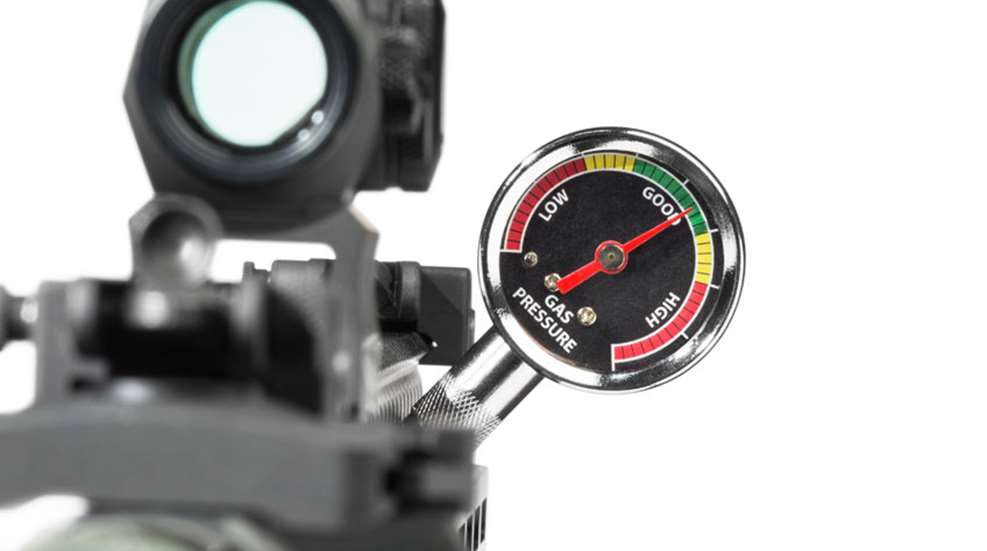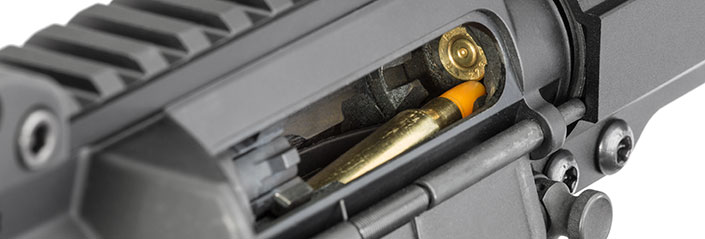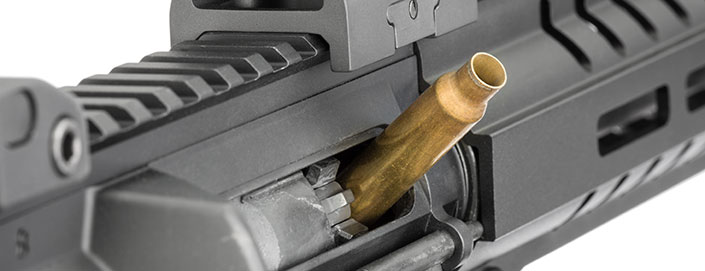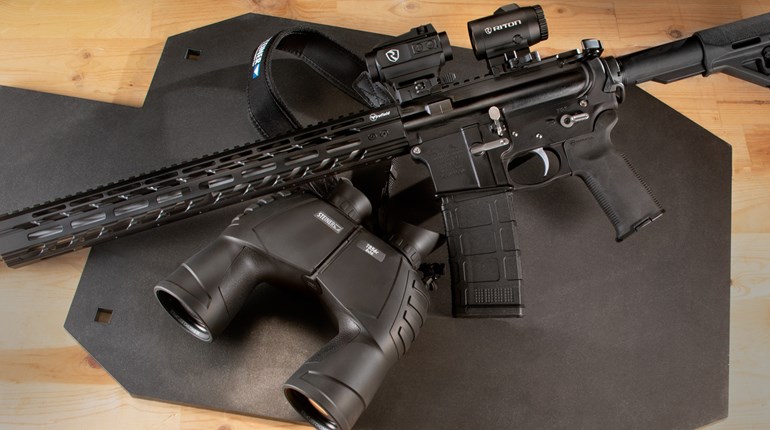
Few things can ruin a recreational range outing like a string of firearm malfunctions. The frustration that follows is shared by hunters and casual plinkers, too. But, a special form of angst is experienced by competitive shooters and those who use their guns to protect life and liberty when their hardware suddenly fails. Today’s metallic click is the modern equivalent to yesterday’s flash in the pan. Both have inspired teeth gnashing, hair pulling and more than a few choice words uttered through the generations.
Modern guns and ammunition are generally of very good quality, but the law of averages dictates that malfunctions will eventually happen to those who shoot regularly. If the circumstances surrounding a stoppage are of the life-threatening variety, the time to play forensic examiner will come later. The first task is to get the firearm running again, switch to an alternate weapon, get behind protective cover, or get out of the situation as quickly as possible—and not necessarily in that order. In less-lethal settings, if immediate action does not help you get back to live-fire mode, the next step is to clear the firearm and then identify the problem. Finding it may be easy, but getting to the bottom of and correcting the malfunction are the real keys to avoid wasting more time, ammo and “choice words” in the future.

Diagnosing Gas-Pressure Issues
My methods for dealing with gun problems are far from scientific and are unlikely to pass an armchair engineer’s analysis, but this approach works for me. I sort most malfunction causes into one of three main categories: magazine, ammunition or pressure. There are certainly other sources, like excessive fouling, broken parts and failed springs, but most of the problems I encounter sprout from one of the three main branches I will focus on here.
If a magazine change fixes the problem, check other mags to ensure that is the extent of things. Then relegate the bad one to range use only or, if it causes continual problems, stomp it into oblivion. Wasteful and childish you say? Yes, but it will ensure you never mix that one with the important magazines and besides, it might actually make you feel a little better.
Ammunition can be ruled in or out easily enough by trying a different brand, load or bullet type. Sometimes, even a simple change in lot will get you up and running again. If switching to different fodder makes the problem go away, try additional loads to ensure you have isolated things down to one particular type. Hopefully, you will not have already bought a case of the newfound troublemaker.
Next stop on the malfunction monorail: Pressure. When it comes to gas-operated, centerfire rifles, the vast majority of feeding problems I encounter result from too little or too much pressure in the system after firing. When pressures are not in the happy operating range for a particular firearm, the system’s timing is thrown off and gun parts begin to fight with each other. One very common gas-gun problem is a failure to fully extract or eject a spent case. The usual result is a stoppage caused by the non-ejected case hanging up as the bolt or carrier tries to feed a fresh cartridge on its way back into battery. This malfunction is often mislabeled as a “double feed.” A true double feed occurs when two live cartridges fight to get into the chamber at the same time. Damaged or poor quality magazines are the usual cause of double feeds, so swapping out the mag is the first step in solving that problem. Conversely, a spent case that hangs up and jams the action can be somewhat trickier to troubleshoot.

Signs of Low Gas Pressure
The first thing I do is to check for low gas because it is the easiest problem to identify and fix. Low-gas failures usually show up as partially extracted cases that do not fully clear the ejection port. As the bolt starts to return forward, the un-ejected case’s mouth jams against something and stops the action. Often the case will “stovepipe,” where the mouth sticks out of the ejection port and the bolt pins the case body in place. Low gas can also be evidenced by a case that does not extract at all because the bolt either does not move after firing or it moves only a short distance, loading the empty back into the chamber. Another indicator is when a case ejects but the bolt closes on an empty chamber. This happens when there is not enough gas pressure to drive a bolt far enough to the rear to pick up the next cartridge.
A simple test can help verify low gas pressure: Load one round into a magazine, then load and fire the gun. For semi-autos that are designed to lock back on an empty mag, if the spent case is ejected but the bolt does not lock rearward, it is likely that there is not enough gas in the operating system. For non-locking bolt designs like AKs and older Heckler & Koch rifles, I load two or three rounds. If the first round ejects its spent case properly, but the bolt closes on an empty chamber or hangs up on top of the next round, you are likely faced with a low-gas situation. I perform this test using different ammo types to gauge the scope of the problem. Heavier projectiles often generate enough pressure to get the bolt all the way to the rear while lighter loads may not. If the bolt locks reliably to the rear on an empty magazine and/or picks up successive cartridges after firing, low pressure is not the droid you are looking for.
Signs of High Gas Pressure
Too much pressure in the operating system—often referred to as “over gassing”—can also cause failures to eject and/or feed, but for different reasons. If the bolt is moving too fast for a magazine to keep pace with, it is possible to end up with an empty chamber after firing. A fast-moving bolt can also outpace the extractor or the ejector—cycling too quickly for a case to be released by the extractor and ejected properly. Pierced, heavily cratered/blown primers, bent rims, gouged head stamps, split necks or mangled case bodies all indicate potentially high pressures, too.
Unfortunately, our ejectors and extractors sometimes like to play dress up, pretending to be pressure-related problems by displaying the same symptoms. An extractor groove burr or overly stout spring assembly can hold spent casings just long enough to hang them up. A weak ejector spring or sticky pin can fail to get empties out of the action on time. Also, keep in mind that different operating systems have their own quirks that cause malfunctions masquerading as pressure problems. M1A pistons seize up, HK-style bolt-locking rollers get stuck and operating rods can bind or break. Your rifle may need extra steps to rule out these or other design-specific issues before taking your complaints to the gas department.

Fixing Gas-Pressure Issues
Identifying the cause of your gun problems is only half the battle: You still must find the right elixir for these ailments. After ruling out all the non-pressure issues, I zero in on the gas system itself. Whether too little or too much gas pressure is evident, the ideal place to fix the problem is at the barrel’s gas port. For low gas, I first ensure the gas block is properly aligned with the barrel’s port. If the gas system is adjustable, I then check to ensure the port inside of the gas block/regulator is wide open. Every so often someone brings me a semi-automatic rifle that is not functioning, only to be embarrassed when I show them that their adjustable-gas system is simply turned off.
In the rare case that a non-adjustable gas block’s internal port is too small, it can be drilled open beyond the size of the barrel’s port. It is much more likely to find that a barrel’s gas port is undersize though. In those cases I open up the barrel port by a few thousandths of an inch at a time until I get the desired result. This needs to be done carefully and in small increments to prevent going too far and to keep from damaging the barrel. These drilling operations require movement or total removal of the gas block. A gunsmith can do this work easily if you are not set up for it.
An expedient—but not permanent or failsafe—approach to getting your rifle’s action running harder is to lighten one or more components that move during the cycle of operation. ARs have the easiest road here, allowing for a quick swap to lighter buffers, action springs and bolt-carrier components. If your rifle or carbine has gas rings, check to ensure the gaps are properly misaligned (yes, you read that right). If your rings have withstood lots of hard use, installing a new set often helps, too. You can also check for excessive gas leakage due to a component that has worked itself loose, like an AK or SKS gas cylinder, a bolt-carrier key, gas-block screws or gas-tube roll pin. Pistons and rod ends should be checked for damage that would allow gas to escape. Clean all of the parts that have carbon or gunk buildup and use a long-lasting, non-gumming lubricant like Gunfighter Gun Oil or ALG Defense Go Juice to help moving parts behave themselves.
Excessive gas pressure in the operating system is an increasingly common problem due to our never-ending quest for faster ammunition velocities and the increased use of sound suppressors. Reducing gas flow through the port is the primary way to negate the problem. Ideally, I will install an adjustable gas system if not already present. If swapping your AR’s gas block is a bridge too far for your confidence level or budget, you can try an adjustable gas tube from MGI. They are a little cheaper and a lot simpler to install. Fortunately, many modern operating-rod driven systems already come standard from the factory with adjustable gas regulators. Whenever possible, I turn down the gas until the bolt and carrier slow down enough for all the other parts to catch up. Simpler remedies to reduce the effects of over-gassing include stiffer action springs, heavy/hydraulic buffers or heavier bolt-carrier components. Several companies also offer gas-adjustable bolt-carrier components for AR-15-type platforms.
I get asked about brass-ejection patterns fairly often. To be honest, I pay very little attention to where my empties pile up. Very minor changes to both gas and non-gas variables can alter ejection patterns widely. As long as they all go to the same general place when using a particular ammo type, I do not use brass dispersion as a diagnostic tool. It is a different story if the same ammo load is spread all over the place. That indicates the cyclic rate is changing from shot to shot and warrants a taking a harder look.

I have only touched on a few of the more common, semi-automatic rifle malfunction causes here. When less-frequent or more-complex problems surface, a deeper dive into the cause is usually needed. When in doubt, seek professional help to ensure your firearm works reliably and safely.
As important as identifying malfunctions is, learning how to recover from them in a hurry is the more critical skill. Learn and practice how to keep your firearm(s) in the fight. A reputable instructor can help you streamline the process and perform the appropriate corrective actions under stress. You can worry about the cause and how to prevent it from happening again after the dust settles.
I was blessed during my Army career to only have one malfunction while under fire. Ironically, I remember it not because it was the horror of gun-fighting horrors, but rather because it was so insignificant that I barely noticed I had a stoppage. I was fighting my way out of a rather complex ambush kill zone, providing suppressive fire for teammates stuck in the same mess. My rifle—a 7.62 NATO-chambered, direct-impingement AR variant—short cycled, never opening far enough to allow a spent casing to fully eject and resulting in a classic, stove-pipe malfunction. Clearing the malfunction and getting back to shooting took me less time to do than it took you to read this sentence. It was a non-issue because I had trained to deal with all manner of malfunctions for most of my adult life up to that point. When it was all over I was able to diagnose and remedy the cause (low gas) without much trouble, and it never happened again.




































